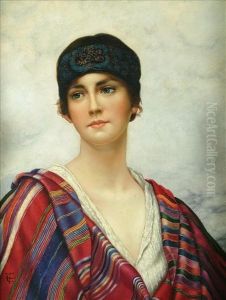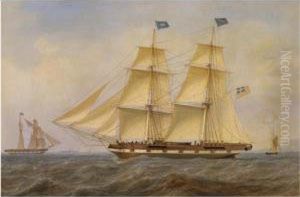William Clarke Wontnercyrene Paintings
William Clarke Wontner was an English painter renowned for his elegant portraits and classical scenes, embodying the aesthetic and technical finesse characteristic of the late Victorian and Edwardian eras. Born on January 21, 1857, in Stockwell, London, Wontner was embedded in an artistic environment from an early age. His father, William Hoff Wontner, was a notable architect and designer, which likely influenced Wontner's early exposure to art and aesthetics. His initial education and training in art were deeply rooted in the traditions of the Royal Academy, though he did not strictly adhere to their teachings throughout his career.
Wontner's artistic style was heavily influenced by the Neoclassical and Romantic movements, but he is most closely associated with the Pre-Raphaelite Brotherhood, despite never being a formal member. His work often paralleled that of Sir Lawrence Alma-Tadema and John William Waterhouse, embodying the Pre-Raphaelite fascination with classical themes, meticulous detail, and vibrant colors. Wontner's portraits, often of women set against the backdrop of classical antiquity, are celebrated for their serene beauty, delicate features, and intricate detail. These pieces not only showcase his technical prowess but also his ability to imbue his subjects with a sense of ethereal grace and tranquility.
Throughout his career, Wontner enjoyed considerable success and was a regular exhibitor at prestigious institutions such as the Royal Academy, the Royal Society of British Artists, and the Society of British Artists, of which he became a member. His works were widely acclaimed for their aesthetic beauty and technical skill, appealing to the tastes of the Victorian and Edwardian elite. Despite the shifts in artistic trends towards Modernism, Wontner remained committed to his classical style, which gradually led to a decline in his popularity towards the end of his career.
William Clarke Wontner passed away on September 23, 1930, in London. Although his name is not as widely recognized today as some of his contemporaries, his contributions to the art of the late 19th and early 20th centuries continue to be appreciated by art historians and collectors. Wontner's legacy lives on through his beautiful and timeless works, which continue to grace the collections of art galleries and museums around the world, testament to the enduring appeal of classical beauty and technical mastery in art.

